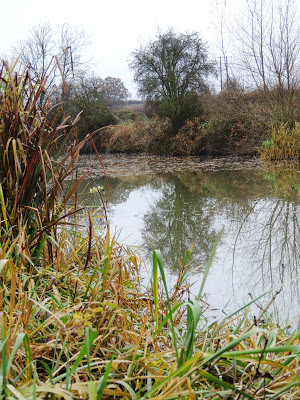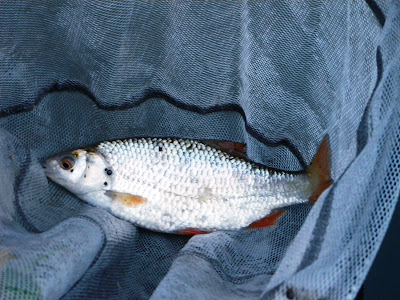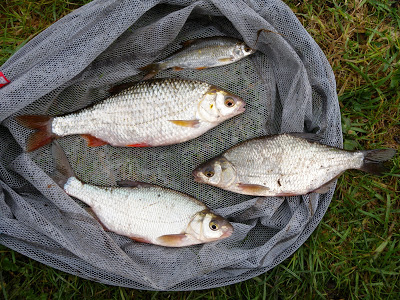Recently, when pursuing the usual one bite, one fish tactic, it became apparent for the first time that more of the session than ever before was actually spent gazing around me than on the superficial object of the outing, the float
Now, given that the bite when it came would be visually unavoidable this was not to be seen as an issue necessarily but it did confirm that this really was something completely new. Match fishing never felt like this. The thought that one might take an eye off the float for long enough to identify a female reed bunting perched in the phragmites was unthinkable, literally the thought would not enter one’s head
The prospect of sitting for hours without that degree of focus would have been a n-starter. How could one possibly adequately compete if the commitment wasn’t there?
One thing which the more ‘specialist’ approach allows is the ability to drift into other worlds while one awaits the inevitable additional excitement of the initial interest followed by the capture
Those who are sufficiently in need of distraction to have followed this blog recently will realise that there have been occasions when ‘makes’ of dog have been suitably enthralling at times, especially those days when the one bite was looking dubious
The main secondary interest, though often obvious in their presence, are birds
It is unusual to rack-up a list of less than ten species while sat there enjoying the, often, morning canal-side air and there are passers-by putting in regular appearances which buck the RSPB’s perceived trend, most notably the bullfinch, a bird considered in such plight as to be ‘amber-listed’ as an expression of its conservation concern and yet, nearly always, present on the canal-side wherever there are suitably dense and continuous hawthorn/brambles on the banks
One remains ever hopeful of seeing the odd rarity, or even scarcity, under such circumstances but in reality this is very unusual. By definition it would be of course but it is noticeable that the canal despite its generally perceived ecological value is not all it might be. Passing as a very thin ribbon of water hedges and ocsasional trees through pasture and arable land is not an ideal substrate against which to promote a highly biodiverse ecological community
However, with a reasonable level of appreciation of bird calls and song it can be fruitful to pick-up species passing overhead and it is this that has brought home the expansion of the raven in Warwickshire. Having once had the dubious honour of being the first person to see this bird at Rutland Water some years back it is one which always resonates when that deep gruff ‘cronk, cronk’ call approaches from any direction. Their growth toward the east seems to mirror that of the buzzard a decade or so previous
 |
| Early morning, long distance, kestrel on wire |
However, with a reasonable level of appreciation of bird calls and song it can be fruitful to pick-up species passing overhead and it is this that has brought home the expansion of the raven in Warwickshire. Having once had the dubious honour of being the first person to see this bird at Rutland Water some years back it is one which always resonates when that deep gruff ‘cronk, cronk’ call approaches from any direction. Their growth toward the east seems to mirror that of the buzzard a decade or so previous
 |
| Long lens shot of ravens on tower |
On a day when only stale bread was available for bait (don’t ask) an attempt to concoct a paste out of it on the bank went slightly wrong. Ultimately despite the biggest topping shoal of fish to go at only one bite was mustered (as per normal!), the highlight of the occasion was the strangest bird call and one never consciously heard before. It emanated from two locations simultaneously indicating not one but two individuals and, thanks to the wonders of modern technology by a process of elimination using an iPhone app it was narrowed down to whimbrel, never heard or seen one before nor since. The closest bird was ‘clearly’ very close indeed on the far bank but concealed by the bankside vegetation between us at all times
The other two unusual sightings both involved woodcock and, again, remain the only encounters within memory although they are not uncommon in the right territory of damp woodland. The first was in a lengthy period of freezing weather when at first glance through a misty windscreen what initially appeared to be a female mallard was probing in the grassy verge by a quite busy road. Something however wasn’t quite right and a quick turnaround and revisit showed the out of place bird to be a woodcock forced to take refuge in such exposure where the only ground soft enough to probe was right next to the road. The next woodcock event was alluded to in a previous post http://floatflightflannel.blogspot.co.uk/2012/05/interlude.html when an individual wholly concealed in dense undergrowth on the far bank emitted soft croaking sounds for a few minutes, again unmistakably confirmed by recordings
The trend however is for a list of around 10 to 20 species to be compiled in a two hour period with a certain bunch of core birds such as thrush species in winter and warblers in summer supplemented by the crow family, the ever present woodpigeon and, a personal favourite, moorhen plus variable finches, buntings, tits, together with mallard, mute swan, skylark, etc.
 |
| Redwing seeking haws at dawn |
Let’s face it; it’s just about being out there!
References:
Birds of Conservation Concern (RSPB)
List for 16th November when the fishing interest was just one roachXbream hybrid of a tad under the pound in a session from 7 to 9am:
Moorhen, mallard, fieldfare, kingfisher, gull sp., redwing, starling, house sparrow, robin, blackbird, magpie, carrion crow, woodpigeon, jackdaw, chaffinch, blue tit, wren, bullfinch, raven, song thrush
References:
Birds of Conservation Concern (RSPB)
List for 16th November when the fishing interest was just one roachXbream hybrid of a tad under the pound in a session from 7 to 9am:
Moorhen, mallard, fieldfare, kingfisher, gull sp., redwing, starling, house sparrow, robin, blackbird, magpie, carrion crow, woodpigeon, jackdaw, chaffinch, blue tit, wren, bullfinch, raven, song thrush





























